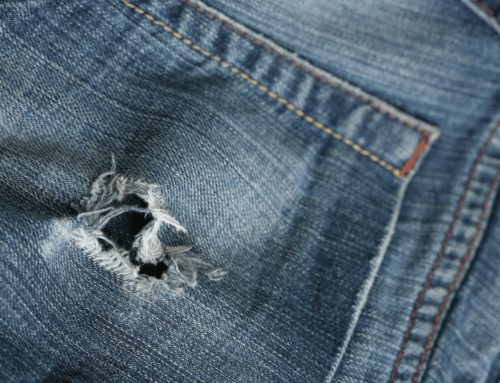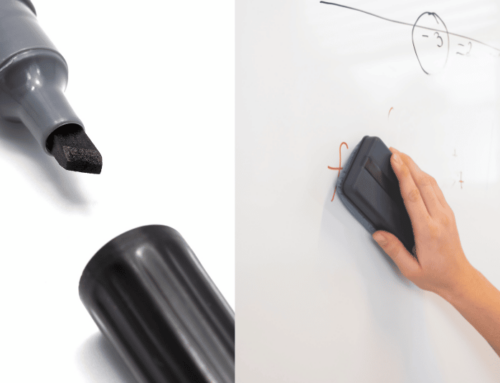How to Remove Latex Paint From Metal

Whether it’s a DIY project gone awry or an accidental spill, latex paint on metal surfaces can be a headache to deal with. But worry not, as we’ve compiled a range of effective methods to help you tackle this challenge and restore the metal’s luster. In this article, we’ll guide you through step-by-step instructions, ensuring your metal surfaces regain their original charm.
Understanding Latex Paint
Definition of Latex Paint
Latex paint, also known as acrylic paint, is a water-based paint commonly used for various surfaces, including metal. It is made from a mixture of pigments, binders, and water. The pigments give the paint its color, while the binders hold the pigments together and allow the paint to adhere to different surfaces.
Common uses of Latex Paint
Latex paint is incredibly versatile and is widely used for painting metal surfaces. It provides excellent coverage and durability, making it suitable for both indoor and outdoor applications. Common uses of latex paint on metal include painting metal furniture, doors, window frames, and appliances.
How Latex Paint adheres to metal surfaces
Latex paint forms a strong bond with metal surfaces due to its adhesive properties. The binders in the paint act as a glue, allowing it to adhere to the metal surface firmly. Additionally, the water in the paint evaporates as it dries, further strengthening the bond between the paint and the metal. This adhesion ensures that the paint remains intact and resistant to peeling or chipping.
Preparation Before Removing Latex Paint
Gather necessary materials
Before you begin removing latex paint from a metal surface, gather the necessary materials. These include a paint stripper or heat gun, scrapers, sandblaster, wire brush or steel wool, vinegar solution, protective gear such as gloves and safety goggles, and a drop cloth or tarp to protect the surrounding area.
Safety measures to take
Ensure you take necessary safety precautions before starting the paint removal process. This includes wearing protective gear such as gloves, safety goggles, and a mask to protect yourself from chemical fumes, dust, and debris. Additionally, ensure the area is well-ventilated to minimize inhalation of any chemicals or dust particles.
Preparing the metal surface
To prepare the metal surface for paint removal, clean it thoroughly using soap and water. Remove any dirt, grease, or loose paint using a scrub brush or sponge. Dry the surface completely before proceeding with the chosen paint removal method.
Method 1: Using a Paint Stripper
Choosing the right paint stripper
When using a paint stripper, it is essential to select the suitable product for your specific needs. Read the labels carefully and choose a paint stripper that is suitable for removing latex paint from metal surfaces. Ensure it is formulated to be safe for use on metal and follow the manufacturer’s instructions.
Applying the paint stripper
Before applying the paint stripper, protect the surrounding area with a drop cloth or tarp to catch any spills or drips. Using a brush or roller, apply an even layer of paint stripper on the metal surface. Allow the stripper to sit for the recommended amount of time specified by the manufacturer.
Removing the stripped paint
After the paint stripper has penetrated the paint layers, use a scraper to remove the softened paint. Work in small sections and gently scrape away the paint, being careful not to damage the metal surface. Dispose of the stripped paint properly according to local regulations.
Cleaning and neutralizing the metal surface
Once all the paint has been removed, clean the metal surface with soap and water to remove any residue from the paint stripper. Rinse thoroughly and allow the surface to dry completely. It is crucial to neutralize the metal surface if the paint stripper indicated it in the instructions. This will prevent any potential chemical reactions.
Method 2: Using a Heat Gun
Safety precautions with heat guns
When using a heat gun, it is essential to follow safety guidelines to prevent accidents and injuries. Use the heat gun in a well-ventilated area to avoid inhaling fumes. Keep the heat gun away from flammable materials, and never leave it unattended while it is still hot.
Proper technique for using a heat gun
Hold the heat gun about 6-8 inches away from the painted metal surface and move it consistently back and forth. The heat from the gun will soften the latex paint, making it easier to scrape off. Be cautious not to overheat the metal and cause damage.
Act of scraping off softened paint
After heating the paint, use a scraper to gently remove the softened paint from the metal surface. Work in small sections, ensuring you scrape away the paint without applying excessive pressure that may damage the metal. Dispose of the scraped-off paint appropriately.
Method 3: Using a Sandblaster
Introduction to sandblasting
Sandblasting is an effective method for removing latex paint from metal surfaces. It involves the use of compressed air and fine particles, such as sand or abrasive materials, to blast away the paint. Sandblasting is best suited for larger surfaces or when dealing with multiple layers of paint.
Safety precautions when sandblasting
Sandblasting creates a significant amount of dust and debris, so wearing protective gear such as a respirator, goggles, and gloves is vital. It is crucial to use a sandblaster in a well-ventilated area or outdoors to minimize the inhalation of dust particles.
How to properly use a sandblaster
Begin by setting up the sandblasting equipment according to the manufacturer’s instructions. Adjust the pressure and flow rate to ensure effective paint removal without damaging the metal surface. Hold the sandblaster wand at a slightly inclined angle and maintain a consistent distance from the metal surface while blasting away the paint.
Dealing with residual paint and dust
After sandblasting, it is essential to clean the metal surface thoroughly to remove any residual paint or dust. Use a brush or sponge and soapy water to scrub away any remaining debris. Rinse the surface with clean water and allow it to dry completely before proceeding with any additional treatment.
Method 4: Using a Wire Brush or Steel Wool
Choosing the right scrubbing tool
When using a wire brush or steel wool, select a tool that is suitable for the size and condition of the metal surface. For larger areas, a wire brush with a long handle may be more convenient, while steel wool is ideal for intricate or smaller surfaces.
Scrubbing the paint off the metal
Using the selected scrubbing tool, apply light to moderate pressure and scrub the painted metal surface in a back-and-forth or circular motion. The wire bristles or abrasive nature of steel wool will help loosen and remove the latex paint. Be careful not to scratch or damage the metal while scrubbing.
Cleaning and smoothing the metal surface after scrubbing
After removing the paint, clean the metal surface with soap and water to remove any residue. Rinse thoroughly and inspect the surface for any rough or uneven areas. Use sandpaper or a sanding block to smooth out these imperfections, ensuring a clean and even surface.
Method 5: Using Vinegar Solution
Preparing the vinegar solution
Mix equal parts of white vinegar and water in a container or spray bottle. This vinegar solution acts as a natural paint remover and helps loosen the latex paint from the metal surface.
Applying the vinegar solution
Spray the vinegar solution onto the painted metal surface and let it sit for about 10-15 minutes. The acidity of the vinegar will help break down the paint, making it easier to remove.
Scraping off the loosened paint
After the vinegar solution has had time to work, use a scraper or a brush to gently scrape away the loosened paint. Work in small sections and be cautious not to scratch or damage the metal surface. Dispose of the removed paint properly.
Rinsing and cleaning the surface
After removing the paint, rinse the metal surface with water to remove any vinegar residue or remaining paint. Use a clean cloth or sponge to wipe down the surface and ensure it is thoroughly clean and ready for further treatment.
Aftercare of the Metal Surface
Rust prevention measures
After removing the latex paint, it is crucial to prevent rust from forming on the metal surface. Apply a rust-inhibiting primer or paint specifically designed for metal surfaces. This will protect the metal from moisture and oxidation, ensuring its longevity.
Surface restoration techniques
If the metal surface has suffered any scratches or damage during the paint removal process, consider using a filler or putty to repair these imperfections. Once the filler has dried, use sandpaper to smooth it out and restore the surface to its original condition.
Painting or sealing the metal surface
After the metal surface has been cleaned and restored, apply a layer of paint or sealant suitable for metal. This will enhance the appearance of the metal and provide added protection against the elements.
Frequently Encountered Problems
Dealing with stubborn paint spots
In some cases, certain areas of the metal surface may have stubborn or hard-to-remove paint spots. In such instances, repeat the selected paint removal method, applying extra pressure or using a more abrasive material if necessary. Alternatively, you can opt for professional help to ensure thorough paint removal.
Handling metal corrosion
If you encounter metal corrosion or rust while removing latex paint, assess the severity of the damage. Minor corrosion can be treated by using a rust converter or a commercial rust remover. For extensive corrosion, it is advisable to consult a professional to assess and address the condition of the metal.
Addressing scratches on the metal surface
During the paint removal process, the metal surface may suffer minor scratches. To address these scratches, use sandpaper of a suitable grit to gently sand the affected area. Once the scratches are smoothed out, proceed with the recommended surface restoration techniques to ensure a seamless finish.
Important Safety Reminders
Proper handling of paint removing chemicals
When using paint strippers or vinegar solutions, always follow the manufacturer’s instructions and guidelines for proper use. Ensure the room is well-ventilated, and wear the necessary protective gear, including gloves, safety goggles, and a mask, to protect your skin, eyes, and respiratory system.
Protective gear when using heat guns or sandblasters
When using a heat gun or sandblaster, it is crucial to protect yourself with appropriate gear. Wear heat-resistant gloves and safety goggles to shield your hands and eyes from potential burns or injury. Additionally, use a respirator or dust mask to prevent inhalation of dust or fumes.
Safe disposal of removed paint
Dispose of the removed paint and any paint-contaminated materials according to local regulations and guidelines. Contact your local waste management or recycling center for proper disposal methods. Avoid pouring paint or paint residue down drains or disposing of it in the regular trash, as it may harm the environment.
As you embark on the journey of removing latex paint from metal, it is crucial to prioritize safety and follow the recommended methods and precautions. With patience and the right techniques, you can restore your metal surfaces to their original beauty and ensure their longevity. Remember to take the necessary aftercare steps to protect the metal from rust and corrosion. Whether you choose paint strippers, heat guns, sandblasters, wire brushes, or vinegar solutions, each method has its own merits and is suitable for different scenarios. Happy paint removal!


